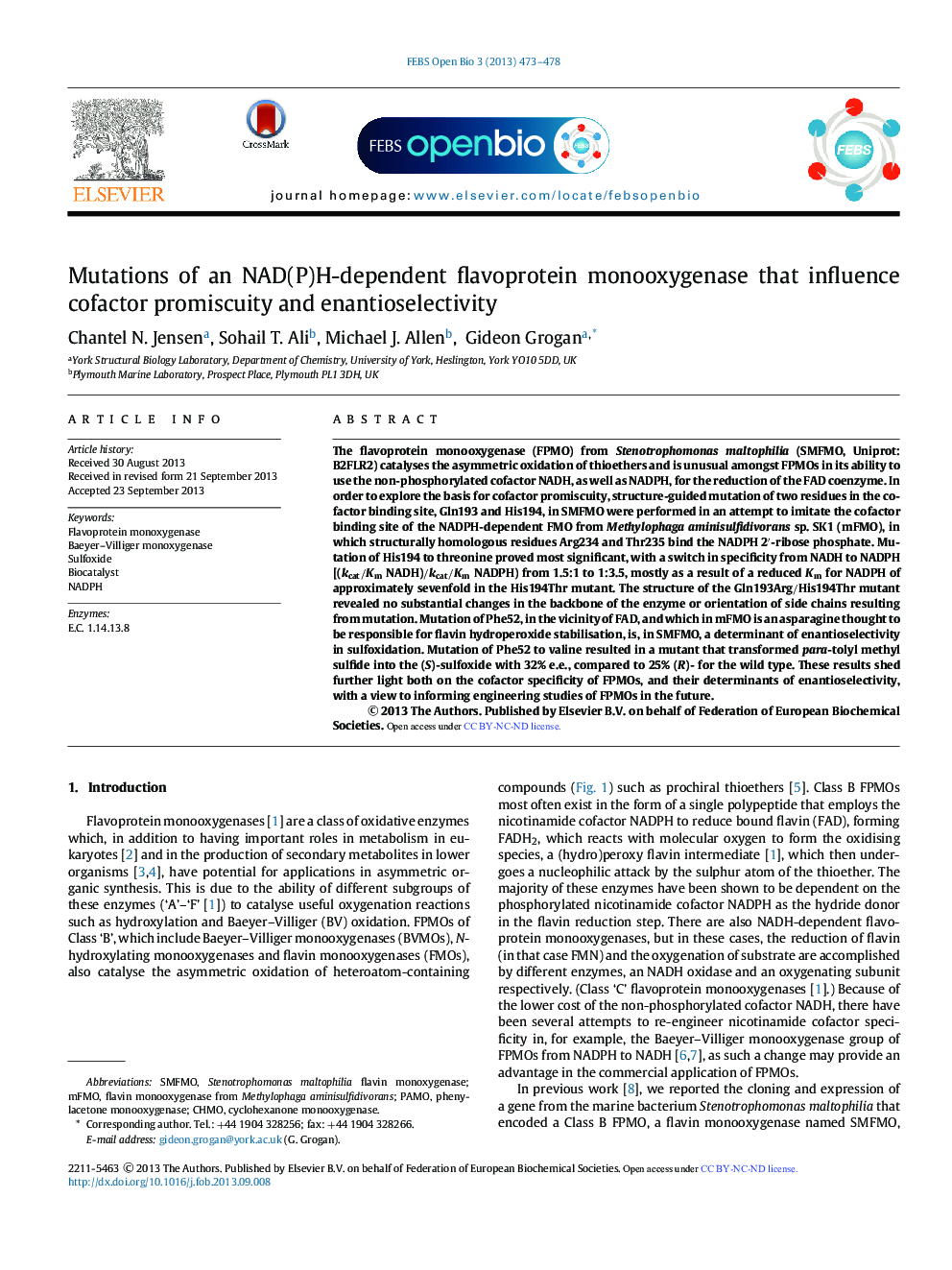| Article ID | Journal | Published Year | Pages | File Type |
|---|---|---|---|---|
| 1981826 | FEBS Open Bio | 2013 | 6 Pages |
•SMFMO was mutated to investigate cofactor specificity and enantioselectivity.•The Gln193Arg/His194Thr mutant displayed a preference for NADPH, rather than NADH.•The structure of the Gln193Arg/His194Thr mutant was determined.•Active site mutants were assessed for enantioselectivity in sulfoxidation reactions.•The Phe52Val mutant displayed inverted enantioselectivity.
The flavoprotein monooxygenase (FPMO) from Stenotrophomonas maltophilia (SMFMO, Uniprot: B2FLR2) catalyses the asymmetric oxidation of thioethers and is unusual amongst FPMOs in its ability to use the non-phosphorylated cofactor NADH, as well as NADPH, for the reduction of the FAD coenzyme. In order to explore the basis for cofactor promiscuity, structure-guided mutation of two residues in the cofactor binding site, Gln193 and His194, in SMFMO were performed in an attempt to imitate the cofactor binding site of the NADPH-dependent FMO from Methylophaga aminisulfidivorans sp. SK1 (mFMO), in which structurally homologous residues Arg234 and Thr235 bind the NADPH 2′-ribose phosphate. Mutation of His194 to threonine proved most significant, with a switch in specificity from NADH to NADPH [(kcat/Km NADH)/kcat/Km NADPH) from 1.5:1 to 1:3.5, mostly as a result of a reduced Km for NADPH of approximately sevenfold in the His194Thr mutant. The structure of the Gln193Arg/His194Thr mutant revealed no substantial changes in the backbone of the enzyme or orientation of side chains resulting from mutation. Mutation of Phe52, in the vicinity of FAD, and which in mFMO is an asparagine thought to be responsible for flavin hydroperoxide stabilisation, is, in SMFMO, a determinant of enantioselectivity in sulfoxidation. Mutation of Phe52 to valine resulted in a mutant that transformed para-tolyl methyl sulfide into the (S)-sulfoxide with 32% e.e., compared to 25% (R)- for the wild type. These results shed further light both on the cofactor specificity of FPMOs, and their determinants of enantioselectivity, with a view to informing engineering studies of FPMOs in the future.
